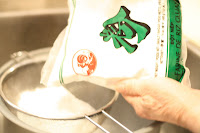Liquidnet Canada Courts Brokers For the First Time
Traders Magazine Online News, September 5, 2012
John D'Antona Jr.
Liquidnet Canada is going to allow broker-dealers to interact and trade in its Canadian dark pool for the first time. The crossing venue is rolling out two new order types for brokers: One is for blocks and will allow the buyside to interact with upstairs liquidity; the other is for smaller sized trades, similar to retail orders.
The pool also looks to curb high-frequency trading by adhering to upcoming rules in the Canadian market that will mandate a minimum trade size in dark pools.

Robert Young
The order types will be avaiable for use September 10.
The goal is provide Canadian buyside customers additional options to find the other side of a trade, using agency liquidity from broker-dealers, according to Liquidnet Canada chief executive Robert Young. Prior, broker-dealers could not trade in the pool. They traded blocks principally on an upstairs desk.
"Everyone knows trading volume is off, and it's harder to find the other side of trade, so we're going after the brokers, as that is known liquidity," Young said. Additional liquidity will also come from retail order flow that trades with the brokers, he added.
There are two distinct new order types available to the brokers. The first is the resting or "block orders," which are fee-liable. The second is the marketable or "stream orders," which is free to brokers. Marketable orders are typically small orders - largely from retail.
These order types are based on but different from the firm's H2O offering which was launched in the U.S. back in 2009. However, unlike in the U.S. where Liquidnet does not charge the sellside for block executions in H2O, it will charge brokers in Canada. For stocks over C$5, the fee is 1 cent. For those between C$1 and C$5, the charge is one-half cent. For stocks less than one Canadian dollar, it is one-quarter cent.
Liquidnet Canada ATS will accept agency orders from broker-dealers, otherwise known as streaming liquidity partners or SLPs. These agency orders, or "agency blocks," must meet a minimum order size criteria of 50 standard trading units or 50,000 shares. This will make it unlikely that HFTs will participate.
Canadian regulators have passed a minimum trade size rule for dark pools which goes into effect Oct. 15. The rule states that for an order to be executed within a dark pool ahead of a lit venue, it must be of a minimum size and offer minimum price improvement.
"What we're doing here is letting clients know that if you want to interact with HFT flow, it will have to be elsewhere," Young said. "We're trying to give people a clear choice in Canada; we're agency-only and non HFT."
The SLP day orders, if executed, will trade at the mid-price. Any Liquidnet client can opt out of interacting with broker block orders if they choose. For each SLP order, the SLP must specify the security, side (buy or sell) and quantity. The SLP can also specify a limit price.
Sources said that dark pool trading in Canada is on the rise, despite the historical penchant to trade on lit venues, as buysiders search for blocks and greater anonymity.
The Investment Industry Regulatory Organization of Canada, the country's leading regulator, reports dark trading is now roughly 7 percent of total daily market volume in Canada. That's up from 2.2 percent in 2011. In the United States, dark pools account for 13 percent of market volume, according to Rosenblatt Securities.
"In opening ourselves to agency orders from brokers listed through the Investment Industry Regulatory Organization of Canada, we also allow clients to trade with the broker of their choice and get their commission chits pad," Young said. "We understand there's a commission squeeze going on out there and clients need to pay their brokers."
For more information on related topics, visit the following channels:

















